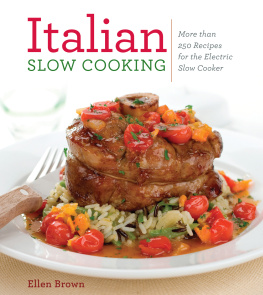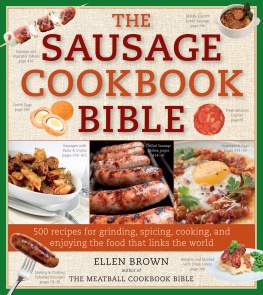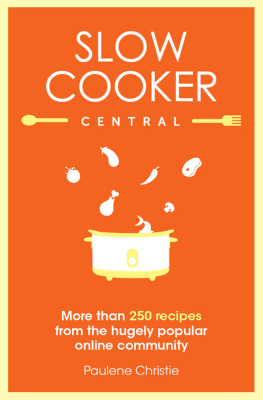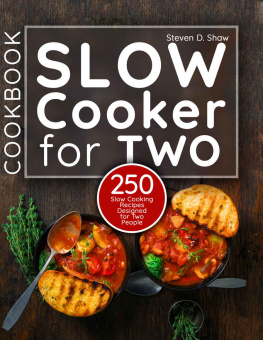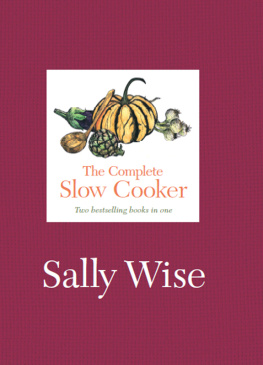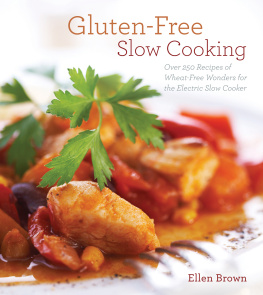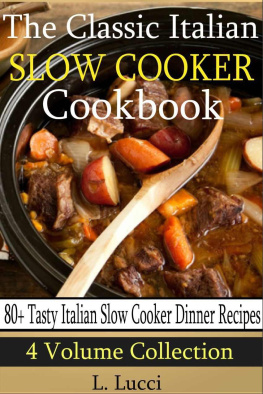Contents
This book is dedicated to Zahir Dubler Cerami, the sweetest little guy in the whole world, and his parents Lisa Cerami and Josh Dubler, who also bring such joy to my life.
Preface
Food writers are frequently asked if you had to choose one cuisine, and eat that food only for the rest of your life, what would it be? And my answer is always Italian. Why? When youre eating Italian food youre not eating one cuisine but many regional cuisines that were very distinct until the late-nineteenth century when the country underwent political unification and modern transportation and communication led to regions learning more about each otherand the foods they ate.
The many regions of Italy are as diverse as the countrys geography, from the snow-capped mountains of the Alps in the north to the sandy beaches of the south. Butter is used more in northern regions while olive oil dominates in the south. Bell peppers and onions are used everywhere, but differently. Each region has long-simmered dishes, and those are the ones youll find in Italian Slow Cooking.
Each of these regions has culinary specialties, just as each produces its unique wines. However, the various regional cuisines are united by the use of only the freshest ingredients, as well as handling those ingredients simply and with respect, as they have for generations. While a few restaurants in Italy might be using liquid nitrogen and other tools part and parcel of todays fad of molecular gastronomy, they are the rare exception. Italian food is honest and straightforward.

Theres much chatter in the food community today about slow food, and this all began in Italy in 1986 when Carlo Petrini from Bra, a small town in Piedmont, organized a group to fight McDonalds from opening near the Spanish Steps in Rome. By 1992 offshoots had been planted in other European communities, and the phrase gained universal meaning by the end of the twentieth century to signify the antithesis of fast food.
This now international movement opposes the standardization of taste and culture. They are against processed foods and believe that everyone has a fundamental right to the pleasure of good food. By 2004 slow food was so well known that Petrini was named one of Time magazines heroes of the year.
Theres no better way to enjoy the pleasures of slow food than to cook it in a slow cooker. Slow cooking has been around for centuries, even before there were kitchensor houses for that matter. The first slow cooking was done in pottery, as it is still today. By the fifth century BCE, iron pots holding simmering food were left to cook around the clock in the fires embers. Cooking slowly has always been part of all regional Italian cuisines.
Although slow cooking was a necessity in the past, today its a choice. With some advance preparation, busy people like you can enjoy a delicious, homemade meal that cooked without anyone around to watch it.
Im continually working on ways to make cooking easier and more pleasurable, as well as producing delicious results. Youll find tricks for browning meat under the broiler rather than dirtying a skillet, and how to effortlessly make dishes such as polenta and risottoat the very heart of Italian cuisinethat require laborious stirring when cooked on the stove instead of in the slow cooker.
If youre new to slow cooker cooking, youre hardly alone, although slow cookers are now found in almost as many kitchens as coffee pots. Back in the early 1970s I received a slow cooker as a wedding present and promptly turned it into a planter because all the recipes written for this appliance, which was relatively new at the time, called for cans of Cream of Something soup and other processed foods. I was a gourmet cook; not someone who cooked all-American favorites.
This is the fifth slow cooker cookbook Ive written, and Im adamant that the slow cooker is a best friend for the modern cook who only uses fresh ingredients. After all, thats the way its done in Italy. And thats what youll find in Italian Slow Cooking.
Buon appetito!
Ellen Brown
Providence, Rhode Island
L uckily for all of us who are science challenged, it doesnt take a degree in physics to operate a slow cooker. Its about the easiest machine there is on the market. Its certainly far less complicated than an espresso machine or even a waffle maker. In this chapter youll learn about slow cookers and how to get the best results from them.
Slow cookers are inexpensive to operate; they use about as much electricity as a 60-watt bulb. They are also as easy to operate as flipping on a light switch.
Slow cookers operate by cooking food using indirect heat at a low temperature for an extended period of time. Heres the difference: Direct heat is the power of a stove burner underneath a pot, while indirect heat is the overall heat that surrounds foods as they bake in the oven.
You can purchase a slow cooker for as little as $20 at a discount store, while the top-of-the-line ones sell for more than $200. They all function in the same simple way; what increases the cost is the bells and whistles factors. Slow cookers come in both round and oval shapes but they operate the same regardless of shape.
Food is assembled in a pottery insert that fits inside a metal housing and is topped with a clear lid. The food cooks from the heat generated by the circular heating wires encased between the slow cookers outer and inner layers of metal. The coils never directly touch the crockery insert. As the element heats, it gently warms the air between the two layers of metal, and it is the hot air that touches the pottery. This construction method eliminates the need for stirring because no part of the pot gets hotter than any other.
On the front of this metal casing is the control knob. All slow cookers have Low and High settings, and most also have a Stay Warm position. Some new machines have a programmable option that enables you to start food on High and then the slow cooker automatically reduces the heat to Low after a programmed time.
The largest variation in slow cookers is their size, which range from tiny 1-quart models that are excellent for hot dips and fondue but fairly useless for anything else to gigantic 7-quart models that are excellent for large families and large batches.
Most of the recipes in this book were written for and tested in a 4- or 5-quart slow cooker; that is what is meant by medium. Either of those sizes makes enough for four to eight people, depending on the recipe. In a few cases, such as for lamb shanks that take up a lot of room as they cook, a large slow cooker is specified.
Rival introduced the first slow cooker, the Crock-Pot, in 1971, and the introductory slogan remains true more than 35 years later: It cooks all day while the cooks away. Like such trademarked names as Kleenex for paper tissue or Formica for plastic laminate, Crock-Pot has almost become synonymous with the slow cooker. However, not all slow cookers are Crock-Pots, so the generic term is used in this book.
Slow Cookers and Food Safety
Questions always arise as to the safety of slow cookers. The Food Safety and Inspection Service of the U.S. Department of Agriculture approves slow cooking as a method for safe food preparation. The lengthy cooking and the steam created within the tightly covered pot combine to destroy any bacteria that might be present in the food. But you do have to be careful.

